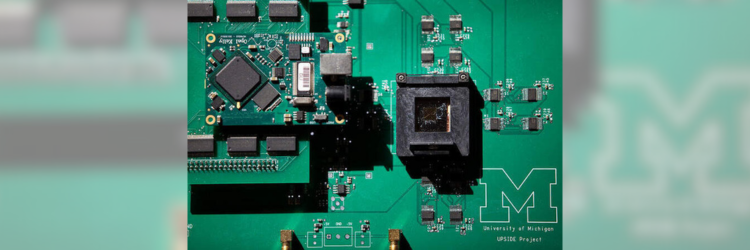
Memristor Challenges Solved for Energy-Efficient AI Computing
How memristors retain information without a power source, known as nonvolatile memory, was little understood until now. Researchers have recently discovered that phase separation works alongside oxygen diffusion to help memristors retain information even after the power is shut off, according to a University of Michigan-led study recently published in Matter.
The team used phase separation to extend memory retention from one day to over ten years in a memory device that can withstand radiation exposure for use in space exploration. Other applications include in-memory computing for more energy-efficient AI applications or memory devices for electronic skin. Also known as e-skin, this material provides sensory feedback to prosthetic limbs, creates new wearable fitness trackers, and helps robots develop tactile sensing for delicate tasks.
The researchers focused on a device known as resistive random-access memory or RRAM, an alternative to the volatile RAM used in classical computing, and promising for energy-efficient artificial intelligence applications. The RRAM used a filament-type valence change memory (VCM) to sandwich an insulating tantalum oxide layer between two platinum electrodes. When they applied voltage to the electrodes, a conductive filament formed a tantalum ion bridge passing through the insulator to the electrodes, allowing electricity to flow. This puts the cell in a low resistance state, representing a “1” in binary code. When the voltage is changed, the filament is dissolved as returning oxygen atoms react with the tantalum ions, “rusting” the conductive bridge and returning to a high resistance state, representing a binary code of “0”.
To test retention time, the researchers sped up experiments by increasing the temperature so that one hour at 250°C is equivalent to about 100 years at 85°C—the typical temperature of a computer chip. They imaged filaments, which measure only about five nanometers or 20 atoms wide, forming within the one-micron-wide RRAM device and found that different-sized filaments yielded different retention behaviors. Filaments smaller than about 5 nanometers dissolved over time, and filaments larger than 5 nanometers strengthened over time.
Together, experimental results and models incorporating thermodynamic principles showed the formation and stability of conductive filaments depend on phase separation.
Study: Thermodynamic origin of nonvolatility in resistive memory(DOI: 10.1016/j.matt.2024.07.018)
